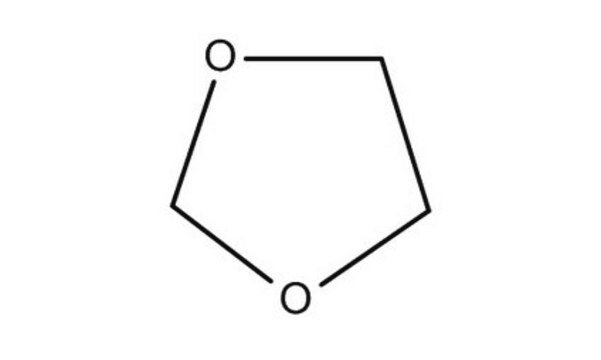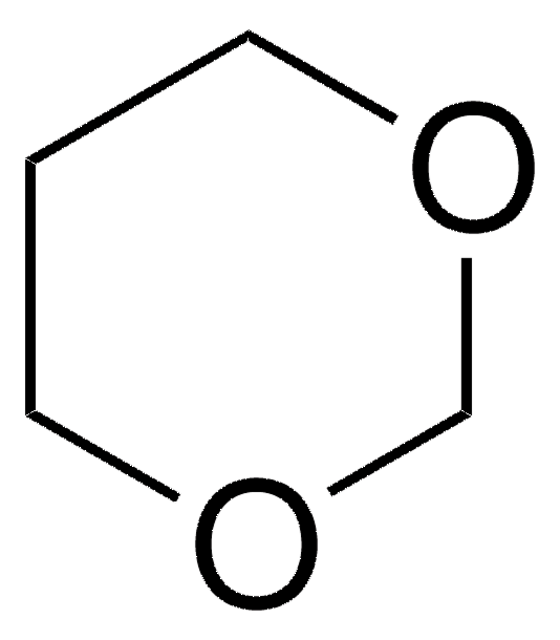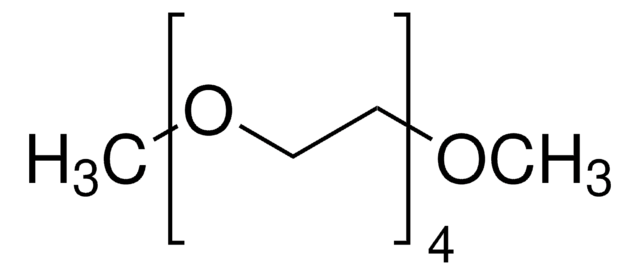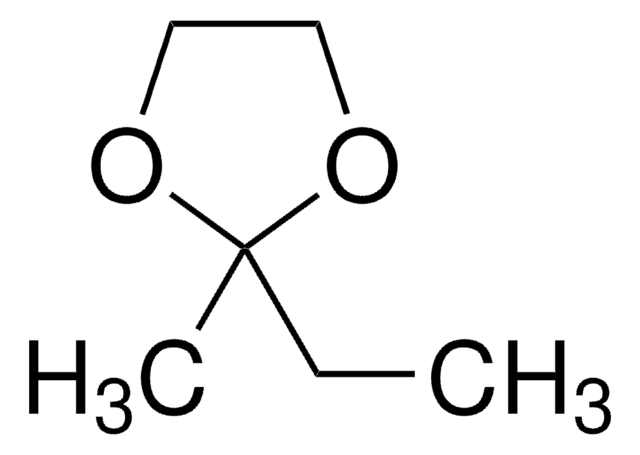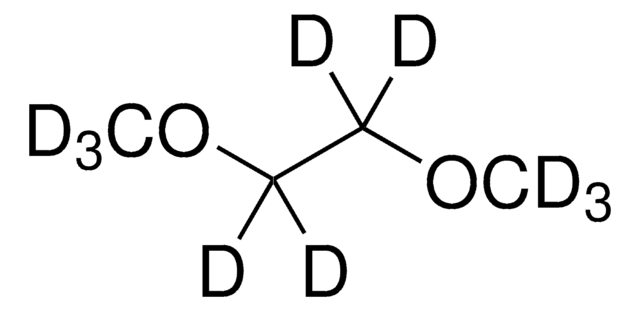271020
1,3-Dioxolane
anhydrous, contains ~75 ppm BHT as inhibitor, 99.8%
Synonyme(s) :
Ethylene glycol methylene ether, Formaldehyde ethylene acetal
About This Item
Produits recommandés
Qualité
anhydrous
Niveau de qualité
Densité de vapeur
2.6 (vs air)
Pression de vapeur
70 mmHg ( 20 °C)
Essai
99.8%
Forme
liquid
Température d'inflammation spontanée
525 °F
Contient
~75 ppm BHT as inhibitor
Impuretés
<0.003% water
<0.005% water (100 mL pkg)
Résidus d'évap.
<0.0005%
Indice de réfraction
n20/D 1.401 (lit.)
pb
75-76 °C/1.013 hPa
Pf
−95 °C (lit.)
Densité
1.06 g/mL at 25 °C (lit.)
Chaîne SMILES
C1COCO1
InChI
1S/C3H6O2/c1-2-5-3-4-1/h1-3H2
Clé InChI
WNXJIVFYUVYPPR-UHFFFAOYSA-N
Vous recherchez des produits similaires ? Visite Guide de comparaison des produits
Catégories apparentées
Description générale
Application
- For the extraction of biodegradable poly(3-hydroxybutyrate) (PHB) from biomass.
- To produce stable dispersions of multiwalled carbon nanotubes (MWCNTs) for the synthesis of modified glassy carbon electrodes.
- To synthesize copolymers (polyoxymethylene) by cationic copolymerization of 1,3,5-trioxane in the presence of maghnite-H+ as a catalyst.
It is also used as a reactant to prepare quasi-solid-state poly(1,3-dioxolane) electrolyte by Sc(OTf)3 catalyzed ring-opening polymerization reactions.
Mention d'avertissement
Danger
Mentions de danger
Conseils de prudence
Classification des risques
Eye Irrit. 2 - Flam. Liq. 2 - Repr. 1B
Code de la classe de stockage
3 - Flammable liquids
Classe de danger pour l'eau (WGK)
WGK 1
Point d'éclair (°F)
26.6 °F - closed cup
Point d'éclair (°C)
-3 °C - closed cup
Équipement de protection individuelle
Eyeshields, Faceshields, Gloves
Faites votre choix parmi les versions les plus récentes :
Déjà en possession de ce produit ?
Retrouvez la documentation relative aux produits que vous avez récemment achetés dans la Bibliothèque de documents.
Les clients ont également consulté
Notre équipe de scientifiques dispose d'une expérience dans tous les secteurs de la recherche, notamment en sciences de la vie, science des matériaux, synthèse chimique, chromatographie, analyse et dans de nombreux autres domaines..
Contacter notre Service technique

